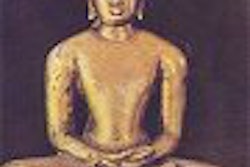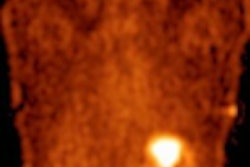Now that scintillator-based detectors are on the scene, x-rays should be jettisoned for assessing embolized seed migration in the lungs, according to radiation oncologists in Canada.
"The seed-migration detector appears to be convenient, cost-effective and noninvasive ... (and) doesn't expose patients to any additional radiation," wrote Dr. Janelle Morrier and colleagues in a poster presentation at the 2005 American Brachytherapy Society (ABS) meeting in San Francisco.
For this study, 155 patients (8,717 seeds) at Laval University in Quebec were scanned for seed migration in a one-year period. The detector was composed of a gamma scintillation probe and a count rate meter. An in-house collimation cap was added to the detection window of the probe, the authors said. Detector response profiles were first taken with and without the collimator using an iodine-125 seed and a water phantom.
The results showed a seed migration rate of 0.47%, or 41 out of 8,717 seeds. Twenty-one percent of the patients had at least one embolized seed. The migration detector found all of the dislodged seeds versus radiographs, which found 68%, and fluoroscopy, which found 90%. Four seeds were found with the detector but were not seen with either imaging modality, the authors stated.
Seed migration based on fluoroscopy alone would have led to a 12.1% false-negative rate; with x-ray alone, the false-negative rate would have been 39.4%.
"Moreover, fluoroscopy and radiographs would have required ... an extra radiation dose," they wrote. "The recommendation to perform chest radiographs to scan the lung for embolized seeds should be revised as the scintillator-based seed-migration detection presents a superior efficacy and a lower false-negative rate." The researchers also suggested that x-ray be reserved for documentation of positive migration cases.
By Shalmali Pal
AuntMinnie.com staff writer
June 15, 2005
Related Reading
Farewell to fusion: Contrast MRI edges CT in postbrachytherapy exams, May 19, 2004
Nuclear medicine agents can set off radiation detectors, November 30, 2004
Copyright © 2005 AuntMinnie.com




















